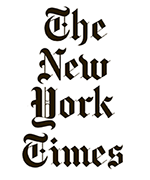 By THE EDITORIAL BOARD, SEPT. 2, 2014
By THE EDITORIAL BOARD, SEPT. 2, 2014
More than anyone, President Vladimir Putin of Russia has set the agenda for NATO’s 65th summit meeting this week, which could well be the most consequential since the Cold War ended.
Early this year, the alliance was deep into one of its periodic assessments about the future as its role in Afghanistan was winding down. Now Mr. Putin, who has long been eager to see NATO weakened, has forced on it a new and urgent purpose by effectively invading Ukraine and demonstrating his utter disregard for the international system.
He seems to delight in taunting the West, including supposedly telling a European official that he could “take Kiev in two weeks,” according to a report in the Italian newspaper La Repubblica.
The question is whether NATO is up to the challenge of pushing back against Mr. Putin’s expansionist tendencies, starting with the need to reassure Eastern European countries that feel most threatened by Russia’s push into Ukraine. While leaders of NATO’s 28 member states are expected to reaffirm the alliance’s core principle of common defense — an attack on one is an attack on all — when they meet in Wales, they have serious differences that could undermine the initiatives intended to deal with Russia and other threats.
The summit meeting’s centerpiece is a formal agreement on a new rapid-reaction force of 4,000 troops, capable of deploying on 48 hours’ notice to protect any NATO member from external aggression, which under the current circumstances means Europe’s periphery — the Baltic States and Poland. Wisely, alliance members have decided to abide by the NATO-Russia Founding Act, a 1997 agreement under which NATO pledged not to base substantial forces in Eastern Europe permanently, which could harden the growing divide and make a diplomatic solution to Ukraine, if one is still possible, more difficult.
There are no plans for new permanent bases or deployments, but troops will be rotated to that region for three- to four-month stints. The force will be supported with logistics and equipment, including weapons and fuel, pre-positioned in Eastern European countries closer to Russia. This will be enhanced by more military exercises and air patrols.
All this will take money, which has been a source of friction among NATO members. The United States bears about 75 percent of the alliance budget, while the contributions from most European countries have fallen. That’s partly because of the economic recession and because the United States has always filled any gaps. They are also divided on the threats. For instance, while NATO opposes Russian moves against Ukraine, Eastern Europe feels more directly threatened and determined to act than, say, Italy, which has been more willing to appease Mr. Putin.
The Europeans obviously have to do more, including increasing defense budgets and imposing sanctions on Russia that could finally cause Mr. Putin to reverse his dangerous course in Ukraine. They should use the Wales meeting to make clear they are prepared to back up their words with action.
Even as Russia preoccupies NATO’s attention today, the alliance should not revert to its Cold War role with Russia as its chief focus. The world will also be looking to NATO for leadership on dealing with the Sunni extremists, the Islamic State in Iraq and Syria. Because of other crises, Afghanistan appears to be getting less attention at this meeting. There are still thousands of American and allied troops on duty there, and NATO has to use its clout and aid money to press the Afghan presidential rivals to settle their election dispute so a president can take office.
NATO is strongest when its members are united in a common purpose, and it will take leadership — and not just talk — from the United States, Germany and others to produce a meaningful consensus.
Comment by Helen Caldicott
I cannot understand the attitude of the US. It promised Russia when the Cold War ended not to expand NATO and in fact NATO has been progressively expanded right up to the Russian borders which in itself is extremely provocative.
What would the US do if indeed Russia or China persuaded Canada or Mexico to become an integral part of their block and armed them which is what Lockheed Martin et al have done, because a country must be suitably armed to join NATO.
However underlying this complicated situation is the fact that both the US and Russia have their nuclear arsenals on a higher than normal state of alert, and between them have enough H bombs to wipe out most life on earth and induce nuclear winter with a short and intense ice age. Do the states-people in the US not understand that it is medically contraindicated to threaten a paranoid person or nation as they may well do something that is extremely dangerous?
Originally published: http://www.nytimes.com/2014/09/03/opinion/natos-urgent-challenges.html?comments#permid=12715167